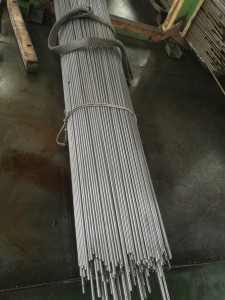A team of researchers recently published a paper in the journal Materials showing the effects of heat treatment on the microstructure, mechanical properties and residual stresses of Invar alloys.
Study: Evolution of microstructure, mechanical properties and residual stresses resulting from heat treatment of cold-rolled Invar alloy plates.Invar is primarily used in thin metal masks (FMMs) due to its extremely low coefficient of thermal expansion. When producing thin metal masks in Invar, residual stresses arise during the cold rolling of the alloy. To effectively control residual stress, cold-rolled Invar alloys are usually heat treated.
The development of high-resolution displays is becoming increasingly important for computer monitors, smart device displays, and large television screens. RGB pixels determine the resolution of the display device. In OLED, pixels are positioned using an evaporation process in which an FMM ensures that each pixel is in its proper place. To perform its tasks, FMMs require thermally stable materials with good structure, such as invar. These alloys must also match the thickness of the FMM (in the micron range).
Metals: The target thickness of FMM alloys is achieved by cold rolling or electroplating. Of the two methods, cold rolling is the more widely used because it allows the mass production of metal sheets with uniform chemical composition and high strength. However, cold rolling causes residual stresses in the Invar sheet, which must be eliminated to obtain high-quality FMM without deformation.
Heat treatments based on metallurgical processes such as reduction and recrystallization can eliminate residual stresses after cold rolling. However, some heat treatments can cause unexpected changes in the mechanical properties and microstructure of the alloy sheets, which are undesirable for high-strength sheets.
Therefore, the researchers of this study studied how the residual stress, mechanical properties and microstructure develop after heat treatment of cold-rolled Invar alloy to develop Invar alloy sheets with high mechanical properties and low residual stress.
A servo-hydraulic universal testing machine is used to evaluate the mechanical properties of Invar panels. The tensile test strain rate was 0.001/s, and the specimens used in the tests conformed to ASTM E8 standard specimen types.
Samples for microstructural characterization were prepared using micro/colloidal polishing and grinding techniques. Field emission scanning electron microscopy (FE-SEM) with a step size of 0.66 μm and electron backscatter diffraction (EBSD) were combined for microstructural analysis.

After annealing the alloy at a temperature of 700°C, the strength of the alloy decreases slightly, and the ductility increases moderately.Due to the absence of recrystallization, the residual stresses of the alloy did not decrease at 400 and 500 °C. Residual stresses begin to be removed at 700°C, and are completely removed after complete recrystallization and recovery of the alloy at 900°C. Therefore, if reducing the residual stress of an alloy plate is more important than strength, then recrystallization is sufficient to reduce the residual stress. The results show that reduction and recrystallization help reduce residual stresses in Invar sheets without degrading their mechanical properties.
Media Contact
Company Name: Cangzhou Zhongshun Steel Pipe Tade Co., Ltd.
Email: Send Email
Address:No.802, 8th Floor, Building 6, Taida International Household Square
City: Cangzhou City
State: Hebei Province
Country: China
Website: www.china-steelpipes.com/
